
Blanca del Rosal is using nanoparticle beams to peer inside the brain.
Credit: Eamon Gallagher for Nature
Five leading early career researchers in materials science
Star competitors in a highly competitive field.
16 December 2019

Eamon Gallagher for Nature
Blanca del Rosal is using nanoparticle beams to peer inside the brain.
The five researchers profiled here are emerging as star competitors in a highly competitive field. Whether building better batteries or unlocking the brain’s mysteries, they are deploying novel materials in novel ways to address pressing problems.
These three women and two men stood out from more than 10,000 researchers identified in the League of Scholars database as having five or more publications since 2015 in any of the following six materials-science-specific journals tracked by the Nature Index: ACS Nano, Advanced Functional Materials, Advanced Materials, Nano Letters, Nature Materials and Nature Nanotechnology.
Journals were selected for inclusion in the Nature Index based on perceptions of quality by independent panels of expert researchers. To be considered for selection, the materials scientists featured here had to be early in their careers, in this instance meaning it is less than five years since their first article citation.
They have a strong track record of year-on-year publication and all have an outstandingly high annualized h-index, a metric which recognizes both the output and impact (using citations as a proxy for impact) across all journals while normalizing for differences in disciplines and career stages.
The citations data shown are drawn from the Dimensions for Digital Science database.
BLANCA DEL ROSAL: Lighting up the brain
Swinburne University of Technology
From a medical perspective, the greatest thing about synthetic nanomaterials, specifically nanoparticles, is their small size. Because they are on the same scale as human cell parts, they are useful as minute probes for spying on cellular machinery without causing too much disruption.
Blanca del Rosal (pictured above) is developing a technology to do just that, using nanoparticle beams to unveil the inner workings of the brain. With her team at Swinburne University of Technology’s Centre for Micro-Photonics in Melbourne, Australia, she is figuring out how luminescent nanoparticles can track temperature changes during the treatment of brain tumours, which could lead to safer approaches.
Her research could also provide a minimally invasive way to observe how the brain behaves during strokes and comas. “The usual way to do it is by sticking a physical probe into the brain,” says del Rosal.
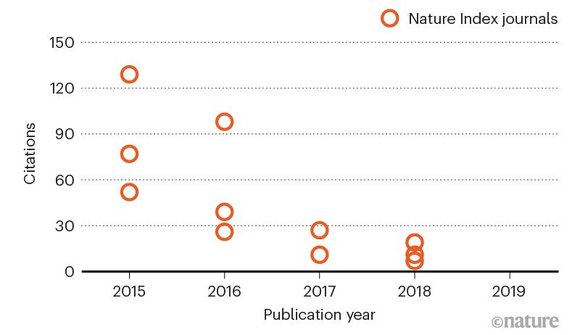
Source: Nature Index
In 2014, del Rosal tested the ability of luminescent nanoparticles to treat cancer in mice as a PhD student at the Autonomous University of Madrid in Spain. A nanoparticle solution injected into the tumours was heated with a laser to around 20% higher than normal body temperature.
The heat generated by the irradiated nanoparticles reduced the size of the tumours, and the team used the fluorescence to monitor changes in temperature. In 20 days, the tumours in the mice were eradicated. “It was the first time that anyone had used this contactless method for sensing temperature below the skin in animal models,” says del Rosal.
Now a postdoctoral research fellow at Swinburne, del Rosal is investigating how to apply this new temperature-sensing approach to mapping brain activity in real time, with the hope of developing a non-invasive method of observing how the brain responds to conditions such as epileptic seizures, brain injuries and strokes.
She is also interested in how light-emitting nanoparticles can be used to assess the efficacy and safety of laser-based therapies used for restoring vision and treating chronic pain. “There’s still a lot we don’t know about the brain, but light can give us more insight into how it works,” says del Rosal. — by Gemma Conroy
EMILY HITZ: Stabilizing influence
University of Maryland
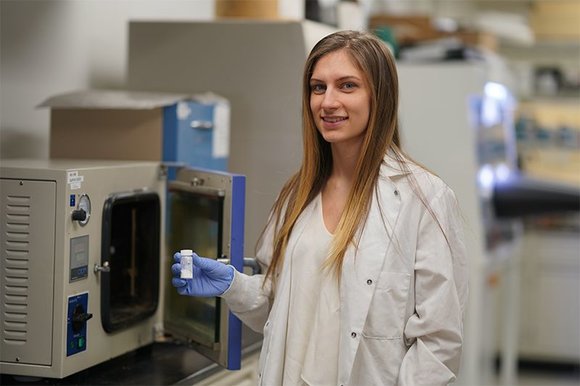
Hua Xie
An important aim for NASA is avoiding explosions during Moon missions. That’s why Emily Hitz is investigating the lunar applications of solid state batteries as part of her three-year fellowship with the US space organization.
Lithium-ion batteries, one of the most common types of rechargeable batteries on the market, use flammable liquid or gel electrolytes. Solid-state batteries, which use solid electrodes and electrolytes made from ceramic, polymer or glass, offer far greater stability. “NASA is interested in having very safe batteries,” says Hitz.
Solid-state batteries are attracting interest as an emerging technology because of their safety, the large amount of power they can dispense per unit of battery size, and their long cycle life, meaning they can complete a high number of charge/discharge cycles at optimal capacity.
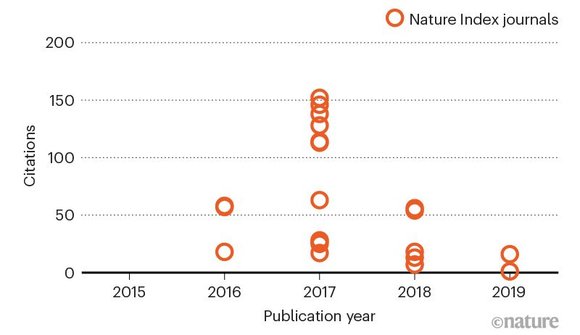
Source: Nature Index
Based in the Department of Materials Science and Engineering at the University of Maryland (UMD), Hitz is interested in how new energy technologies can become more accessible by incorporating cheap and easy-to-manufacture resources.
“One day we might literally be using a block of wood to make a battery,” she says. “We use whatever we can to make it work. I like that flexibility.”
Having graduated from UMD with an electrical engineering degree in 2015, Hitz made the transition to materials science for her PhD. She wanted the opportunity to discover highly desirable material properties by having a stronger chemistry focus in her work. “I wanted to actually change the materials I was working with; to change their properties,” she says.
Hitz’s ultimate goal is to see new kinds of commercially viable batteries become part of a more diverse landscape of renewable energy technologies. “You can’t just sit in the lab and let the technology die there,” she says. — by Bec Crew
JUAN-PABLO CORREA-BAENA: Solar cell optimizer
Georgia Institute of Technology
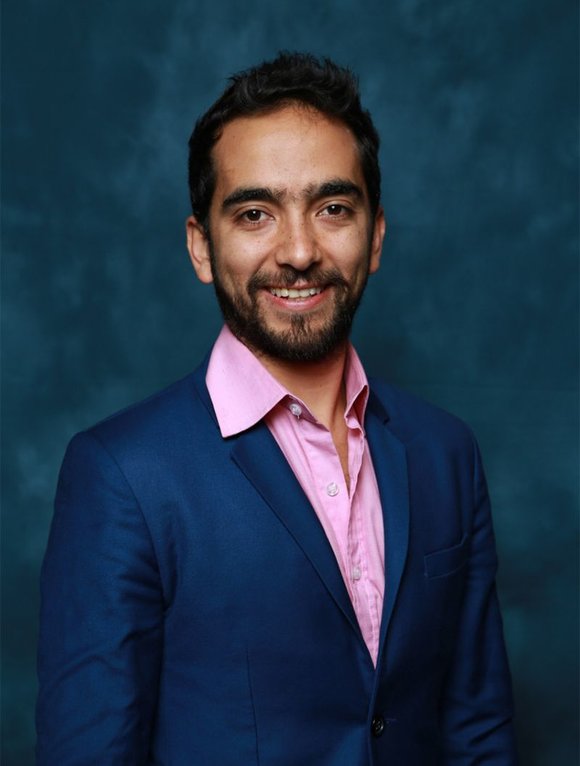
For materials scientist, Juan-Pablo Correa-Baena, the key to addressing the world’s growing energy demands is understanding solar cells at the nanoscale.
At the Georgia Institute of Technology, he is uncovering the chemical reactions that underpin the performance of perovskite solar cells. They are cheap to manufacture and have shown remarkable increases in efficiency over the past decade, achieving a higher energy output than commercially available silicon solar cells.
Lead halide perovskite materials can convert sunlight into electrical energy, making it an ideal material for solar cells. Researchers have been experimenting with different ways to assemble perovskite solar cells to improve their stability and efficiency.
A major limitation of perovskite solar cells is that they don’t hold up well against moisture or extended periods of light or heat, so Correa-Baena is working on techniques to create a protective outer layer that doesn’t compromise the cell’s performance.
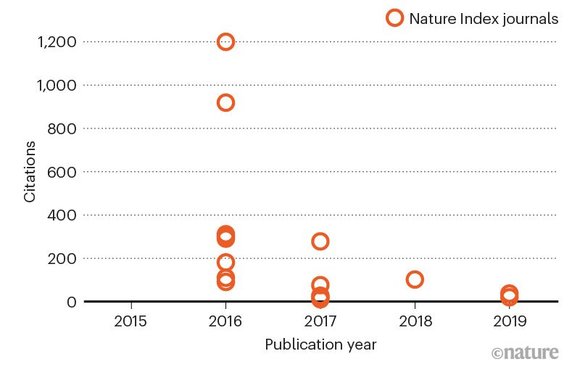
Source: Nature Index
During his postdoc at the Massachusetts Institute of Technology (MIT) in 2018, Correa-Baena used the powerful light beams generated by synchrotron particle accelerators to probe the nanostructure of perovskite solar cells. He found that adding low concentrations of caesium and rubidium to perovskite solar cells can boost their performance. “It was one of the biggest discoveries I’ve had,” says Correa-Baena. “It opened up this whole new field of things that we could explore using synchrotrons.”
Improving access to power for rural communities in Correa-Baena’s home country, Colombia, is the driving force behind his research, he says. “There’s much more that we can do in research to try to push forward topics that are important to the world.” — by Gemma Conroy
HUANG YANG: Flexible thinking
Shenzhen University
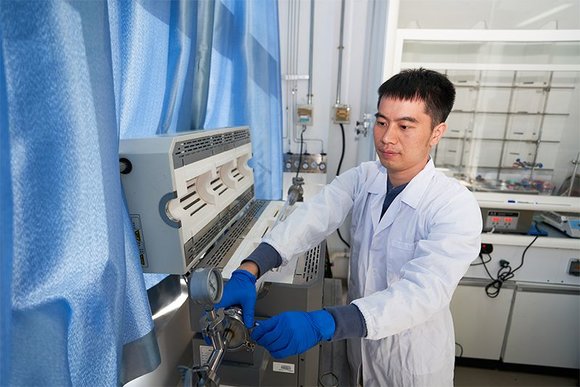
Yang Zou/Shenzhen University
Huang Yang, an assistant professor of materials science at Shenzhen University in China, has emerged as a high-impact researcher through his work with supercapacitors, an alternative to batteries that could provide energy storage solutions for wearable and bendable technologies.
Supercapacitors are ideal in applications requiring many rapid charge and discharge cycles, such as electric cars, and could be the key to advancing foldable smartphones and television screens. In 2019, Motorola, Samsung and Huawei introduced bendable smartphones to the market, but although their screens can fold like a book, their lithium-ion batteries are not flexible.
The current fix is to place either two electrodes of one battery, or two or more separate batteries, at either end of the screen, but this comes at a cost to the overall power of the device.
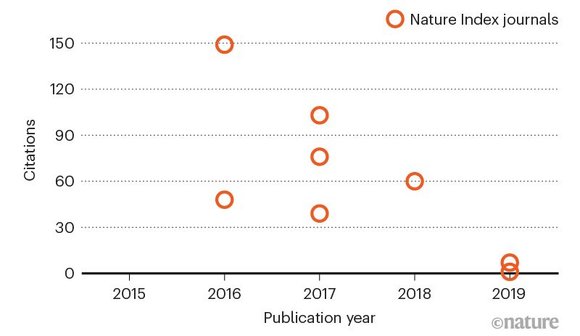
Source: Nature Index
The ability to withstand bending, or ‘deformation’, is a major goal for energy storage technology. Huang is developing a flexible ‘shape memory’ supercapacitor that can be stretched and deformed. A heat trigger is then used to restore its shape and stability.
The technology, he says, would be ideal for powering wearable tech, as it can be sewn into fabric.
Huang and his colleagues take a multidisciplinary approach to developing supercapacitors. He says the unconventional way that they test the limits of the technology is revealing some promising new directions for flexible devices.
“We’re combining organic and inorganic material, trying methods both at the nanoscale and macro-scale, and we’re attempting new and traditional materials,” he says. — by Hepeng Jia
RACHEL CARTER: Taking charge
US Naval Research Laboratory
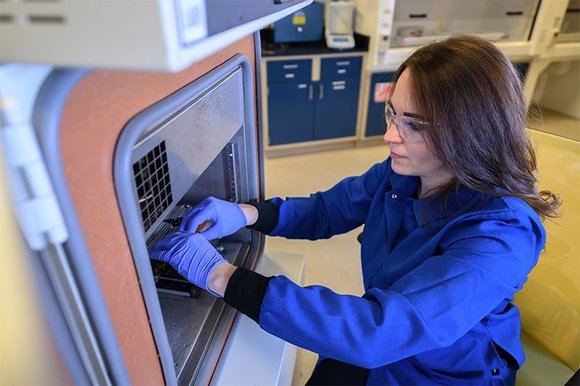
Jonathan Steffen, U.S. Naval Research Laboratory
An invention that won three researchers the 2019 Nobel Prize in Chemistry, lithium-ion batteries launched the portable electronics industry and are expected to play a crucial role in future renewable energy storage.
Scientists are now working to solve problems relating to their safety, performance and the amount of waste they produce. In Australia, 2% of lithium-ion batteries are recycled; in the United States and Europe, the rate is less than 5%.
Rachel Carter, a research engineer at the United States Naval Research Laboratory (NRL) in Washington, is investigating ways to expand the lifespan of lithium-ion batteries, while also pursuing alternatives, such as lithium sulfur batteries and sodium sulfur batteries.
The biggest challenge with rechargeable batteries, says Carter, is that the chemical reaction that generates power isn’t 100% reversible — meaning the battery loses capacity with every charge. “Inevitably, they will degrade,” says Carter.
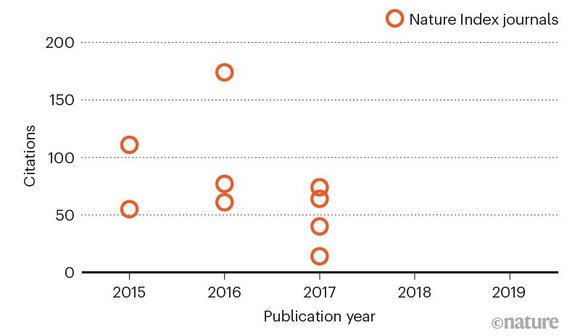
Source: Nature Index
“Our focus is on developing materials that produce high energy and high reversibility, but also to understand their behaviours from a materials science perspective, such as what happens when they’re heated or cooled.”
With her colleague, Corey Love, a materials research engineer at the NRL, Carter is finding ways to detect temperature variations, a common cause of dangerous leaks in lithium-ion batteries, without opening them.
“Using this technique to determine when thermal imbalances occur, we can detect unsafe cell conditions,” says Carter.
She is passionate about working with other young researchers on energy storage solutions. She is also leading initiatives within the NRL to foster professional development for female scientists. “I’m looking forward to seeing what happens with these battery chemistries, and collaborating with up-and-coming scientists is an exciting part of that,” she says. — by Bec Crew
This story is part of Nature Index 2019 Materials Science. See more stories here
